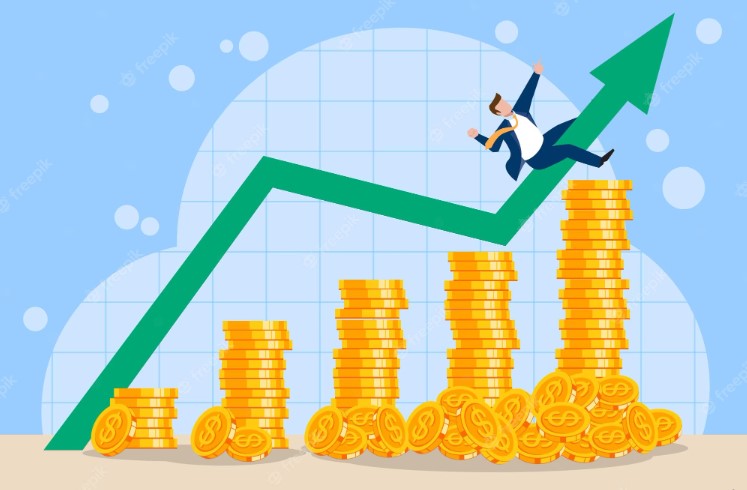How Does Compound Interest Work?
Compound interest is the interest earned on an investment’s original amount (or principal) plus any previous interest earned. In essence, you are earning interest on top of interest.
You don’t just earn interest on your principal balance when you use compound interest. Your interest also earns interest. When you compound interest, you add the interest you’ve earned back into your principal balance, which earns you even more interest, compounding your returns.
Compound interest increases because it considers interest from previous periods.
Long-term investment returns can be significantly increased by compound interest. Compared to a deposit of $10,000 earning 5% compound interest over ten years, a deposit of $100,000 earning 5% simple annual interest would generate $50,000 in interest.
Generally, you don’t just sock away a lump sum of money and return to it in 40 years. In reality, most people save or invest money each week or month. As a result, your savings grow with your principal (the money you put in) plus interest, which continues to compound as the initial balance grows with both principal and interest.
At various time intervals, interest can be compounded (or added back into the principal). Interest, for example, can be compounded annually, monthly, daily, or even continuously. The frequency of interest compounding affects how quickly your principal balance increases.
What Effect Does Compound Interest Have on Debt?
Compound interest is your worst enemy if you’re still trying to pay off debt. Why? Because borrowing money works against you and increases the amount you owe to your bank or lender.
Prepare yourself if you have credit card debt. Every month, your credit card charges interest on the balance on your card—the average interest rate (or annual percentage rate) on a credit card account is 16.65%.
It will be added to your credit card balance if you do not pay enough to cover the new interest for the month. The following month’s interest is calculated based on that new, higher amount, resulting in you paying more and remaining in debt for longer.
The same applies to other types of loans, such as student loans, car loans, and personal loans. If you do not pay your interest charges on time, they are added to the principal balance of your loan.
Understanding Compound Interest Calculations
Interest can be compounded at any frequency, from daily to annually. Standard compounding frequency schedules are commonly used with financial instruments. For savings accounts at banks, the most common compounding schedule is daily.
Compounding frequency schedules for certificates of deposit (CDs) are typically daily, monthly, or semiannually; for money market accounts, it is frequently daily. The most common compounding schedule for home mortgage loans, home equity loans, personal business loans, and credit card accounts is monthly.
Variations in the time frame in which accrued interest is credited to the existing balance are also possible. Interest on an account can be compounded daily but credited only once a month. Additionally, some banks offer continuously compounding interest, which continuously adds interest to the principal. Practically speaking, daily compounding interest only applies if you want to deposit and withdraw funds on the same day.
The Benefits and Drawbacks of Compounding
On the plus side, compounding can work in your favor regarding investments and can be a decisive factor in wealth creation. Exponential growth from compounding interest is important in mitigating wealth-eroding factors like rising living costs, inflation, and diminished purchasing power.
Compound interest can benefit from mutual funds since it’s one of the simplest ways for investors.
Reinvesting mutual fund dividends results in purchasing additional shares of the mutual funds. Buying more shares will assist in the fund’s investment increasing in value as more compound interest accumulates over time.
Compound interest earnings are taxable unless the money is in a tax-sheltered account. It’s usually taxed at the standard rate associated with your tax bracket, and if the investments in your portfolio lose value, your balance may fall.
How to Grow Your Investments Using Compound Interest
Pay off your debts:
Compound interest is a powerful force. You want it to work for you rather than against you. If you are in debt, you may be making interest payments on a credit card or a compounding personal loan.
Give yourself time:
Time is everything when it comes to compound interest. The sooner you begin saving or investing, the longer that money has to grow. This is why it is critical to start saving for retirement as soon as possible. The sooner you begin, the less money you will have to save. Compounding allows you to grow the majority of your retirement funds.
Each year, increase your contributions:
If you get a raise this year, earn money through a side hustle, or inherit money, increase your contributions instead of raising your standard of living.


Recent Comments